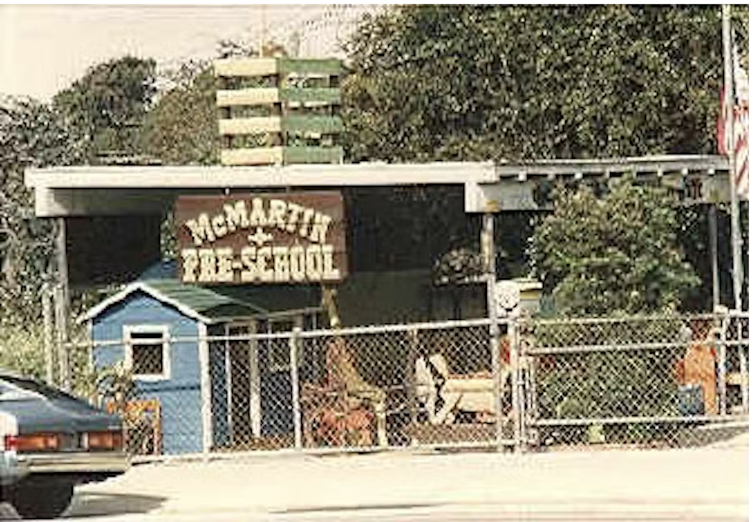Calling drag queens 'groomers' and 'pedophiles' is the latest in a long history of weaponising those terms against the LGBTIQA community
- Written by Timothy W. Jones, Associate Professor in History, La Trobe University

Drag queens around the world are currently being accused of “grooming children” through drag storytime events. These accusations curiously associate public book reading with child sex offending.
We know from decades of research and inquiries the places that young people are most at risk of sexual victimisation are their home or an institution of care (such as a school, orphanage or church). The people that most often offend against children are family members and care providers.
However, this recent panic about drag queens reading in public libraries is actually typical in the history of child sexual abuse. This history has involved repeated moral panics that distract from the alarming data regarding child sexual abuse in the home. Instead, these narratives locate the threat to children outside of the home - to gay men, “stranger danger” and even satanic ritual abuse - rather than confronting the situations and protecting children where they are most at risk.
Moral panic
In the 1970s, feminist attention to domestic violence, sexual assault and the patriarchy created the conditions that enabled the sexual assault of children in the home to be put in the spotlight.
It wasn’t long, however, before attention was shifted elsewhere. In the 1980s, fears about a new form of abuse spread. Satanic ritual abuse was thought to involve large numbers of victims and perpetrators, but was “so cloaked in secrecy and involve such precise concealment of evidence that almost no one knew about it”.
Satanic ritual abuse captured headlines and people’s imaginations with tales of particularly painful, depraved and degrading practices. Research has shown that reports of abuse initially came from adults who “regained memories” of experiences of satanic abuse in their childhoods. Additional reports clustered in the periods after media attention on initial cases.
The consensus in medical literature that emerged in the 1990s was there was a tendency of some individuals, especially clients of particular psychotherapists, to manufacture memories of abuse which never occurred. Corroborating evidence of abuse was not found, leading sceptics to account for these “pseudomemories” through “misdiagnosis, and the misapplication of hypnosis, dreamwork, or regressive therapies”.
Subsequently, the satanic ritual abuse controversy and “false memory syndrome” have been used to discredit hard-fought feminist recognition of the gravity of child sex offending.
A deviant lifestyle
There is also a long history of using paedophilia and ideas about child grooming in homophobic and transphobic ways to oppose the recognition of the civil rights of LGBTIQA people.
Campaigns to decriminalise homosexuality often struggled against attempts to impose unequal ages of consent in reform legislation. In 1967, for example, homosexuality was decriminalised in England and Wales, but men had to wait until they were 21 to legally consummate their love, five years longer than straight lovers.
In Tasmania, the last Australian state to decriminalise sex between men (in 1997), a heated public debate frequently raised issues of child protection. Letters to newspapers claimed that decriminalisation “would only open the floodgates and allow the very young to become prey to those who have chosen to lead this deviant lifestyle”.
The idea was that young people are vulnerable to becoming homosexual and shouldn’t be allowed to consent to sexual activity until they were much older than their heterosexual peers.
Sitting behind this notion of the vulnerability of young queer people is the false idea that LGBTIQA status is a sign of moral failing, illness or perversion.
Further, it perpetuates the myth that queerness or transness is somehow transmissible. This is the somewhat fantastical idea that everybody has the latent potential to become queer or trans, and all that is needed to convert is exposure to a queer or trans person.
These fears have fuelled repressive legislation, such as the notorious Section 28 in Prime Minister Margaret Thatcher’s Britain, Ugandan and Russian laws banning the promotion of homosexuality, and the “don’t say gay” laws in the United States.
Ironically, these strange and harmful ideas are also behind the ineffective, discredited and dangerous attempts to change or suppress LGBTIQA people’s sexuality or gender identity.
In these instances of so-called “conversion therapy”, it is often religious conservatives who “groom” young LGBTIQA people in attempts to make them straight and cisgendered.
Such change and suppression practices are now thankfully against the law in many jurisdictions around the world.
A kinder and gentler future
Despite periodic moral panics, the history of gender and sexuality since 1970 tends towards a kinder, gentler future. People have generally become more accepting of LGBTIQA people’s human rights, and are more welcoming and celebrating of sexual and gender diversity.
The pace of change has been fast, however, and some groups of people haven’t gotten used to contemporary community standards of acceptance, such as the move towards marriage equality around the world.
Because of this history of growing acceptance, young people are feeling more comfortable and safer to explore their identities at younger ages. They are thus more visible than they used to be in the past.
However, they’re also more vulnerable as they explore sensitive aspects of their inner selves at younger and potentially less resilient ages. Research shows the impacts that homophobic and transphobic messaging can have on young people, proving they need to be protected from this harmful rhetoric – not from drag queens.
Drag storytime events are an age-appropriate way to celebrate diversity. They benefit all children – gay, straight, transgender and cisgender – with education about consent, human dignity, self determination and human rights.
This knowledge is one of the best protective factors against child victimisation.
Authors: Timothy W. Jones, Associate Professor in History, La Trobe University





